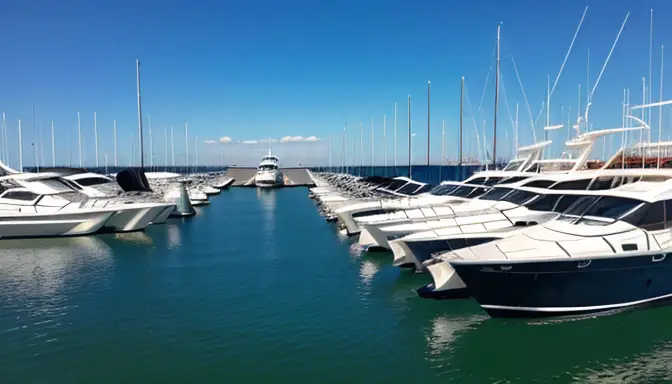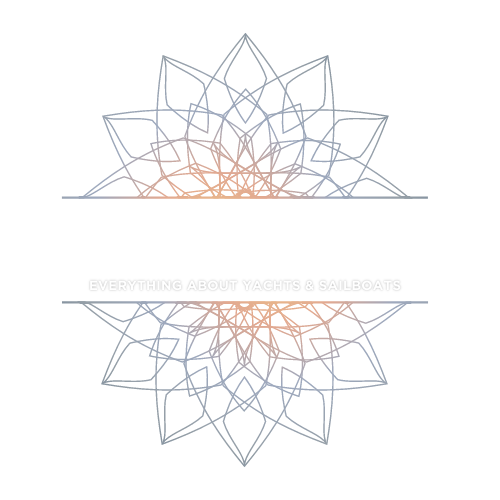Adapting your boat with a shore power to 110 adapter is a crucial step in ensuring a safe and reliable power supply while out on the water. By making this adaptation, you can enjoy the convenience of connecting your boat to shore power sources without any hassle. Let’s dive into the world of shore power adapters and explore how they can enhance your boating experience.
Understanding Shore Power
Shore power is a crucial aspect of boating that provides electrical power to boats when they are docked at a marina or harbor. This external source of power allows boaters to run appliances, charge batteries, and operate various systems on their vessels without relying solely on internal power sources. By utilizing a shore power connection, boaters can enjoy a more comfortable and convenient experience while on board. However, the standard shore power connection may not always match the electrical systems on all boats, leading to the need for a shore power to 110 adapter.

Choosing the Right Adapter
When it comes to choosing the right adapter for your boat’s shore power to 110 conversion, there are several crucial factors to consider. Ensuring the compatibility of the adapter with your boat’s electrical system is paramount to avoid any mishaps or malfunctions. Safety features should not be overlooked, as marine environments can be unforgiving. Opt for adapters with built-in safety mechanisms to protect both your boat and its occupants.
Durability is another key aspect to keep in mind. Selecting an adapter designed to withstand the rigors of marine conditions will guarantee a longer lifespan and reliable performance. Investing in a high-quality adapter may initially seem pricier, but it will pay off in the long run by providing a secure and efficient power connection.
Creating a checklist of requirements based on these considerations can help streamline the selection process. By prioritizing compatibility, safety, and durability, you can confidently choose the right adapter that meets your boat’s specific needs and ensures a seamless shore power to 110 conversion.
Installation Process
When it comes to installing a shore power to 110 adapter on your boat, it is crucial to follow a step-by-step process to ensure a secure and efficient connection. Here is a guide to help you through the installation:
- Begin by gathering all the necessary tools and equipment needed for the installation, including the adapter, electrical tape, wire strippers, and screwdrivers.
- Locate the shore power inlet on your boat where you will connect the adapter. Ensure the area is clear of any obstructions and easily accessible.
- Turn off the power supply to your boat to prevent any electrical accidents during the installation process.
- Carefully read the manufacturer’s instructions that come with the shore power to 110 adapter to understand the specific installation requirements.
- Connect the adapter to the shore power inlet on your boat, ensuring a tight and secure fit. Use the appropriate tools to fasten the adapter in place.
- Double-check all connections to make sure they are properly secured and there are no exposed wires that could lead to electrical hazards.
- Once the adapter is securely installed, restore the power supply to your boat and test the connection to ensure everything is functioning correctly.
By following these installation steps carefully, you can enjoy a reliable power source on your boat with the added convenience of a shore power to 110 adapter.

Safety Precautions
Safety should always be a top priority when dealing with electrical systems on a boat. To ensure a safe and enjoyable boating experience, it is crucial to follow when using a shore power to 110 adapter. Here are some essential tips to keep in mind:
- Always check the condition of the adapter and power cord before each use to look for any signs of wear or damage.
- Make sure the shore power source is turned off before connecting or disconnecting the adapter to avoid electrical shocks.
- Use a ground fault circuit interrupter (GFCI) to protect against electric shock in case of a short circuit.
- Do not overload the adapter with too many appliances or devices to prevent overheating and potential fire hazards.
- Regularly inspect the connection for any loose fittings or corrosion that may affect the performance of the adapter.
By following these , you can enjoy a worry-free boating experience with a reliable power supply from your shore power to 110 adapter.
Maintaining Your Adapter
When it comes to maintaining your shore power to 110 adapter, regular care and attention are key to ensuring its longevity and optimal performance on your boat. Here are some essential tips to help you keep your adapter in top condition:
- Inspect Regularly: Check the adapter for any signs of wear, corrosion, or damage. Address any issues promptly to prevent further damage.
- Clean Properly: Keep the adapter clean and free from dirt, debris, or salt buildup that can affect its functionality. Use a soft cloth and mild cleaner to wipe it down regularly.
- Protect from Elements: Store the adapter in a dry and secure location when not in use to prevent exposure to moisture or extreme weather conditions.
- Secure Connections: Ensure all connections are tight and secure to prevent loose wiring or potential electrical hazards.
- Follow Manufacturer’s Guidelines: Adhere to the manufacturer’s recommendations for maintenance and care to avoid voiding any warranties.
By following these maintenance tips, you can extend the lifespan of your shore power to 110 adapter and enjoy uninterrupted power supply during your boating adventures.

Benefits of Using an Adapter
When it comes to boating, having the right equipment can make all the difference in your experience out on the water. One essential piece of gear that can greatly enhance your boating adventures is a shore power to 110 adapter. This handy device allows you to connect your boat to shore power outlets, providing a reliable source of electricity while docked. Let’s dive into the benefits of using a shore power to 110 adapter and how it can elevate your boating experience.
One of the key benefits of using a shore power to 110 adapter is the increased convenience it offers. Instead of relying solely on battery power or a generator, you can easily plug your boat into shore power when available, ensuring a continuous and reliable source of electricity. This convenience allows you to run various electrical appliances and systems on your boat without worrying about power limitations.
Additionally, using a shore power to 110 adapter provides you with greater flexibility in terms of power sources. Whether you are docked at a marina or anchored offshore, having the ability to connect to shore power gives you more options for charging your batteries and running your onboard systems. This flexibility can be especially beneficial during longer boating trips or when staying at a marina for an extended period.
Another advantage of using a shore power to 110 adapter is the access it provides to a more stable and consistent power supply. By connecting to shore power, you can avoid fluctuations in power that may occur when relying on other sources. This stable power supply not only ensures the smooth operation of your boat’s electrical systems but also helps prevent potential damage that can result from power surges or fluctuations.
Troubleshooting Common Issues
When it comes to using a shore power to 110 adapter on your boat, it’s essential to be prepared for potential challenges that may arise. Understanding common issues and knowing how to troubleshoot them effectively can save you time and ensure a smooth boating experience. Here are some common problems you may encounter and the steps you can take to address them:
- Overheating: If your shore power to 110 adapter is overheating, it could be due to an overload or poor connection. Check the electrical load on the adapter and make sure all connections are secure. Consider reducing the load or replacing the adapter if necessary.
- Intermittent Power: If you experience intermittent power supply, inspect the adapter’s wiring and connections for any loose or damaged components. Ensure that the adapter is compatible with your boat’s electrical system and that all connections are tight.
- Tripped Circuit Breaker: In the event of a tripped circuit breaker, first, identify the cause of the overload. Disconnect any appliances or devices that may be drawing too much power and reset the breaker. If the issue persists, consult a professional electrician.
- Corrosion: Corrosion can affect the performance of your adapter over time. Regularly inspect the adapter for signs of corrosion, especially in marine environments. Clean the connections with a suitable solution and consider applying protective coatings to prevent further corrosion.
Frequently Asked Questions
- What is shore power?
Shore power is a vital source of electrical power for boats when docked at marinas. It allows boats to connect to the local electrical grid, providing a reliable power source for onboard systems and appliances.
- Why do I need a shore power to 110 adapter?
A shore power to 110 adapter is necessary to convert the higher voltage of shore power (usually 220 volts) to the standard 110 volts used on boats. This adapter ensures compatibility and safe power usage on your vessel.
- How do I choose the right adapter?
When selecting a shore power to 110 adapter, consider factors like compatibility with your boat’s electrical system, safety features such as surge protection, and durability to withstand marine conditions.
- What safety precautions should I follow?
It is crucial to follow safety measures like regular inspections of the adapter and shore power connection, using a ground fault circuit interrupter (GFCI), and avoiding overloading the electrical system to prevent hazards.
- How can I troubleshoot common adapter issues?
If you encounter problems with your shore power to 110 adapter, check for loose connections, test the power supply, and inspect for any damage. Consulting a professional electrician is recommended for complex issues.
- What Happened to Bluewater Yachts? The Inside Story - May 31, 2024
- Upgrade Your Boat’s Water Pump to the Mach 5 - May 30, 2024
- Upgrade Your Boat with the Big Stuff Stuffing Box - May 30, 2024


